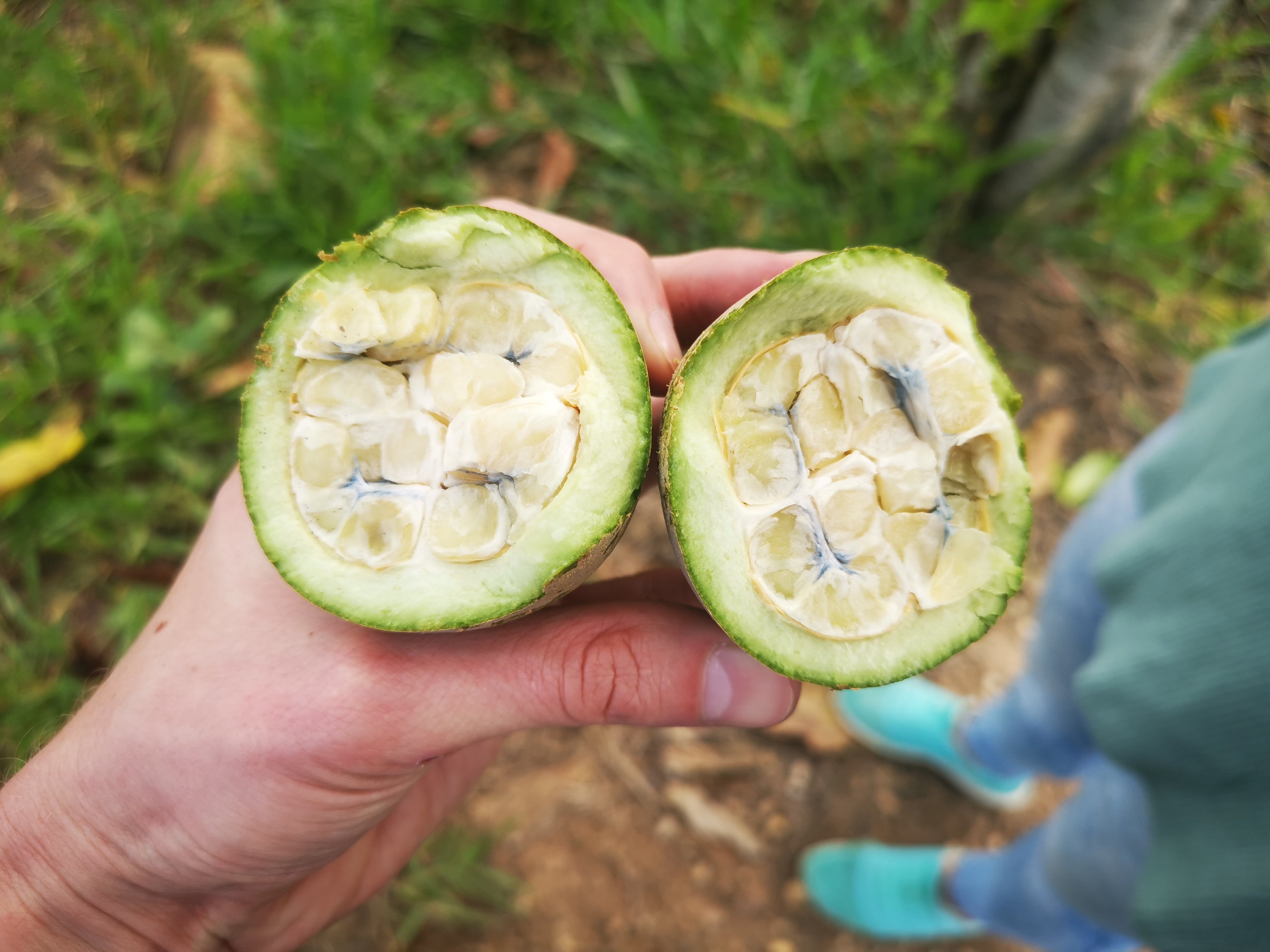About the Jagua tree
The Jagua story begins with the Genipa americana tree. Native to the rainforests of Central and South America, this tree often reaches up to 20 meters in height. These trees can live for several decades, with some even reaching the ripe age of a hundred years or more.

Jagua’s origins can be traced back to the tropical rainforests spanning from Brazil to Panama. The tree has a preference for humid, rain-soaked environments, making the Amazon basin its primary home. However, the cultivation and knowledge of Jagua have gradually extended beyond its native regions. Now, Jagua trees can be found in parts of Central America and even some areas of the Caribbean.
Its broad leaves shelter clusters of white blossoms, but the real attraction is the fruit it bears. It looks like a mix between a kiwi and a small melon. The rugged exterior of the fruit encloses a pulpy center, from which the prized Jagua juice is extracted.

From fruit to dye: Jagua's coloring power
So how does a fruit turn into the striking blue-black dye we're so fascinated by? The magic lies in the juice of the unripe Jagua fruit. When the juice is exposed to air, a process called oxidation occurs. Think of it like how an apple slice turns brown after being left out for a while. This oxidation transforms Jagua's clear juice into a strong, semi-permanent dye.
When applied to the skin, the dye doesn't just sit on the surface. It interacts with the outermost layer of the skin, staining it. This is why Jagua tattoos can last for up to two weeks, gradually fading as the skin naturally exfoliates.
Want to learn more about how we produce jagua?
The history of Jagua: tribal traditions
For many of us, Jagua might seem like a recent discovery. But take a look at its history, and you'll find that indigenous tribes have used Jagua for centuries. For these tribes, Jagua was more than just a cosmetic accessory. It was a bridge to the spiritual realm, often used in ceremonies to ward off malevolent spirits or mark important life events. Tattoos made from Jagua served as symbols of protection, identity, and even maturity.

The dye extracted from the Genipa americana fruit found its way into applications too, like crafts, painting fabrics, and ornamenting pottery. Besides its more widely recognized application as a natural dye, the fruit has also been used as a food source.
The ripe fruit of the Genipa americana tree is edible and has been consumed by indigenous people. When ripe, the fruit's outer skin turns soft, revealing a sweet and tangy pulp inside, which can be eaten raw. The taste is often described as a mix between lemon and rhubarb. Additionally, the fruit can be processed into jams, jellies or fermented to produce a beverage.
Modern-day use of Jagua in body art
Fast forward to today, and Jagua's cultural significance has merged seamlessly with temporary body art. The tattoo-like appearance of Jagua is interesting for people who do not want to commit to a permanent tattoo but rather want to enjoy a temporary version. It is also a great alternative for traditional henna for individuals who prefer a darker stained design. Artists have expanded on traditional patterns, incorporating both ancient symbols and modern motifs into their artwork. This blend underscores Jagua's timeless appeal.










